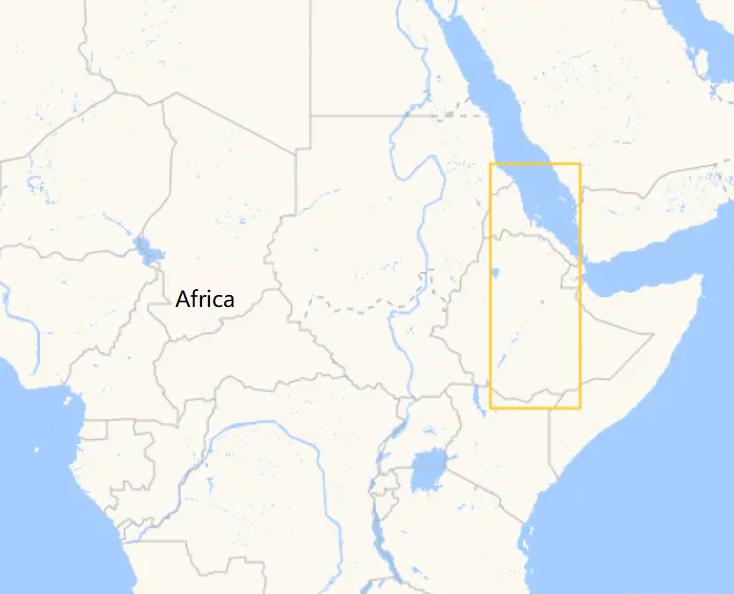Introduction to openlayers-source
What is Source?
- Data source and format. The simple understanding is that when using
layers(layer) Different layers need to pass in different data types in order to render the map. The data formats they need are all defined bySource. We only need to transfer the existing data into the data source in accordance with the regulations, and we do not need to care about other operations.
Some data types of Source
Ol.source.BingMapsLayer source of the map block data.ol.source.CartoDBThe layer source of the CartoDB Maps API.Ol.source.ClusterCluster vector data.Ol.source.VectorProvides vector layer data.Ol.source.ImageProvides the type of single image data.ol.source.ImageCanvasThe data source is a canvas element, in which the data is a picture.ol.source.ImageMapGuideImage map data provided by Mapguide server.ol.source.ImageStaticProvide a single static picture map.ol.source.ImageVectorThe data source is a canvas element, but the data in it is a vector source.ol.source.ImageWMS WMSA single picture data provided by WMS service.ol.source.MapQuestMapQuest Slice data provided.ol.source.StamenStamen Map slice data provided.ol.source.TileProvide image data cut into grid slices.ol.source.TileVectorVector data cut into grids.ol.source.TileDebugData is not obtained from the server.ol.source.TileImageProvide image data cut into slices.ol.source.TileUTFGridUTFGrid interactive data in TileJSON format.ol.source.TileJSONSlice data in TileJSON format.ol.source.TileArcGISRestSlice data provided by ArcGIS Rest service.ol.source.WMTSSlice data provided by the WMTS service.ol.source.ZoomifySlice data in Zoomify format.ol.source.OSMSlice data provided by OpenStreetMap.ol.source.XYZLayer source of slice data with a set of URLs in XYZ format defined in the URL template.
Using Source with Layer
Ol.source.XYZ slicing data source
1.Used in the ol.layer.Tile layer.
<pre> Var layerTile = new ol.layer.Tile ({ Source: new ol.source.XYZ ({ Url: 'https://webrd01.is.autonavi.com/appmaptile?lang=zh_cn&size=1&scale=1&style=8&x={x}&y={y}&z={z}' }) }) </pre>
2.The slice data of Amap is obtained by url.
Data Source of ol.source.Vector Vector layer
1.Common attribut.
attributionThe prompt message in the lower right corner of the map is passed in a string.featuresgeographic elements. Pass in anol.Featureobject.urlThe address of the element data.format urlAfter property setting, set the element format returned byurl. The format underol. formatis passed in.
2.Use features to load data.
<pre class="brush:py;"> Var polygon = new ol.geom.Polygon ([ [ [37, 19] [43, 19] [43, 3] [37, 3] [37, 19] ] ]) Polygon.applyTransform (ol.proj.getTransform ('EPSG:4326',' EPSG:3857')) / / Polygon featur Var polygonFeature = new ol.Feature (polygon) / / Vector layer Translation merge failed
Var vectorLayer = new ol.layer.Vector ({
Source: source
Style: new ol.style.Style ({
Stroke: new ol.style.Stroke ({
/ / Line style
Color:'# ffcc33'
Width: 2
})
})
})
Map.addLayer (vectorLayer)
</pre>

- In addition to using functions to create feature data,
- you can also use GeoJSON format data.
<pre> / / data in GeoJSON format Const geojsonObject = { Type: 'FeatureCollection' Crs: { Type: 'name' Properties: { Name: 'EPSG:3857' } } Features: [ { Type: 'Feature' Geometry: { Type: 'Polygon' Coordinates: [ [ [- 5e6, 6e6] [- 5e6, 8e6] [- 3e6, 8e6] [- 3e6, 6e6] [- 5e6, 6e6] ] ] } } { Type: 'Feature' Geometry: { Type: 'Polygon' Coordinates: [ [ [- 2e6, 6e6] [- 2e6, 8e6] [0, 8e6] [0, 6e6] [- 2e6, 6e6] ] ] } } { Type: 'Feature' Geometry: { Type: 'Polygon' Coordinates: [ [ [1e6, 6e6] [1e6, 8e6] [3e6, 8e6] [3e6, 6e6] [1e6, 6e6] ] ] } } { Type: 'Feature' Geometry: { Type: 'Polygon' Coordinates: [ [ [- 2e6,-1e6] [- 1e6, 1e6] [0,-1e6] [- 2e6,-1e6] ] ] } } ] } / / Vector layer Var source = new ol.source.Vector ({features: new ol.format.GeoJSON () .readFeatures (geojsonObject)}) Var vectorLayer = new ol.layer.Vector ({ Source: source Style: new ol.style.Style ({ Stroke: new ol.style.Stroke ({ / / Line style Color:'# ffcc33' Width: 2 }) }) }) Map.addLayer (vectorLayer) </pre>
1.GeoJSON is a format used to encode various geographic data structures. It is also our most commonly used data format.
2.This format is also commonly used to obtain the URL.
- Because Source has many data types, each has its own parameters, events, and so on. It will not be introduced one by one, which will be explained later when using different layers.
- You need to keep in mind that source is a necessary option in layer that defines the source of map data, and source supports a variety of number formats.